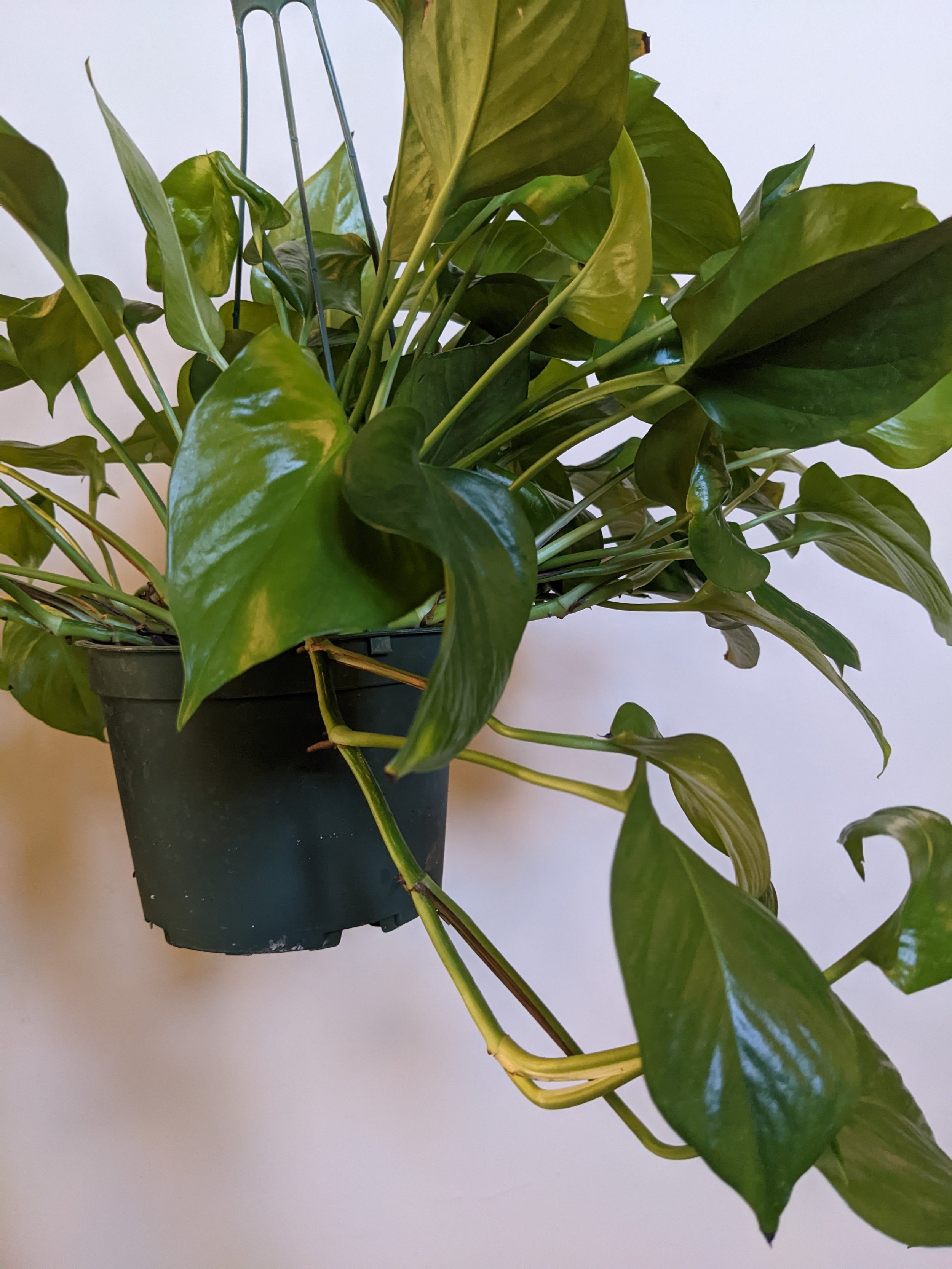Plant Care 101: Watering
One of the more common causes of issues we see in the Plant Lab is overwatering. If there’s anything everyone knows plants need, it's water. We want to help our plants grow, so we give them water on self-care Sunday, right? Not quite. H2O is tricky stuff!
Overwatering typically occurs when plants are watered too frequently. This can cause a variety of symptoms that can affect plant health such as yellowing leaves, foliage loss, and root rot. It can be incredibly difficult to come back from the results of overwatering. With that in mind, we want to share advice on watering houseplants - including some tips from the team at the end of this post.
Most plants prefer their soil to dry out to some degree in between waterings. Some plants even like their soil and roots to dry fully in between watering sessions. Each plant will have a preference depending on their natural habitat.
Think of soil existing in a state between two points: Dry ↔ Soaked.
You’ll need to get the details on your plant and confirm where it likes to be,
or at which point to add water.
Communication is the basis for a successful relationship, and this is as true with plants as it is with people! Plants are excellent communicators, and if you pay close attention they will tell you what’s going; some will dramatically wilt or faint, only to perk up overnight after a good drink. Succulents can store water in their leaves + stems and will go from plump to shriveled when they need water (they can even burst and fall apart if overwatered!).
Many plants will look droopy or limp/weak when they are ready for water.
This pothos is a good example: leaves are pointing down & feel thin as there isn’t much water in the cells of the leaves. The plant and soil are lightweight when picked up - this plant is ready to be watered.
The leaves on this pothos are more firm, and stand up as the cells fill up with water.
The plant and soil have a bit of weight when picked up, so we won’t need to water this one for a while.
As a general rule, it’s usually safer to go longer than you think in between waterings, as plants can recover more easily from going a few extra days without water, but bouncing back from overwatering is incredibly stressful for the plant (and their person!) A best practice is to aim for less frequent but thorough watering.
Watering frequency will also need to be adjusted based on the season - most plants won’t need to be watered as frequently in the fall/winter as they do in spring/summer, as the colder temperatures and slower growth will usually impact how much water a plant needs and vice versa.
A big piece of advice we give to our plant peeps is: try not to worry so much about a “schedule” or “calendar” for watering your plants. You’ll need to observe how your plant behaves in your space for a while once you bring it home. We’ll cover these next topics and terms in a future post, but it’s important to note the following can all affect watering frequency: Soil types, seasonal changes, heater & air conditioner use, and humidity levels will all affect how quickly plants and soil dry out.
Watering Tips
We’ve polled the team and put together some helpful tips & things we wished we knew when we started bringing plants into our homes:
For plants still in their nursery pots, pick them up once in a while and feel how heavy they are (water = weight) to get an idea of how they’re drying. If it’s light, it may need water soon, if it’s heavy, you’ll probably be okay to hold off.
A moisture meter will eliminate any guesswork and usually comes with a chart that includes a ton of plant types.
Bottom watering is great if you want to water a handful of plants at once. This method will also “train” roots to grow “down and out” and can rehydrate compact/hydrophobic soil. It’s really great for plants that like to go completely dry between water. Set in a water dish or whatever you have for 20-30 minutes, do something else while they drink!
Planters with drainage will help make sure the plants don’t stay too wet for too long and reduce the chances of root rot.





